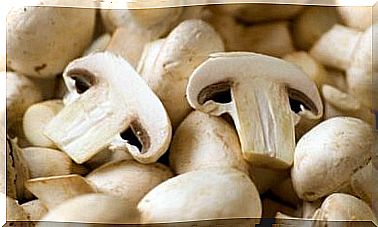Holly: Benefits, Uses And Contraindications
In folk medicine, holly is used to control blood pressure and improve circulation. Let’s see in detail other of its benefits and contraindications, considering its toxicity.

Holly, also known as Ilex aquifolium , is a shrub or small tree that measures between 6 to 15 meters. It is easy to recognize by its pyramidal shape, smooth dark gray trunk, and oval leaves with a spiny edge.
The fruits are another characteristic that stands out. These are usually bright red or yellow in color and are toxic. It is estimated that only eating between 20 to 30 is enough to cause the death of an adult.
Despite this, its leaves and other parts of the plant are used medicinally. Its benefits are linked to the treatment of fever and the common cold. Let’s see in detail how it can improve health, as well as its possible adverse effects.
Holly benefits
Holly leaves have active compounds (triterpenes, flavonoids, phytosterols, caffeine, among others) that provide many health benefits. Traditional medicine usually uses them for high blood pressure and attributing to it a supposed improvement in circulation.
Likewise, they act as an herbal remedy that could control fever, help with the common cold, bronchitis, rheumatism, and some digestive problems. It is also believed to have a calming effect, which is why it would be able to relieve joint pain and inflammation.
For its part, the leaf extract holly is recommended by naturopathic doctors to reduce jaundice, yellowing of the skin and eyes that is caused by the accumulation of bilirubin in the blood and is linked to a disorder of the liver , the gallbladder or the pancreas.
Other benefits attributed to holly include the prevention and treatment of heart disease, as well as a reduction in the feeling of dizziness.

Holly uses
Holly plays an important role in the Catholic tradition. Legend has it that the crown of thorns used by Jesus during the crucifixion was made with branches of this bush and the red fruits would symbolize his blood.
Likewise, there are other myths that mention that holly arose for the first time from the footprints of Jesus Christ and that the thorns of its leaves and the red of its fruits represent suffering.
In that sense, it is not surprising that this plant has been used for religious rituals for thousands of years. It is even a tradition to make Christmas decorations with holly, since it is believed that they bring happiness and goodwill.
However, these are not all uses of the bush. Holly wood is prized for its quality and is often used to make game boards, shotgun butts, and tool handles. The bark, for its part, is essential in the creation of the hisca or league for hunting birds, a form of hunting that dates back to the 18th century.
Regarding its medicinal uses, in addition to those mentioned, holly could be prescribed as a purgative. However, this practice has been deprecated, since preparing a concoction with the tree’s fruits can have fatal consequences due to toxicity.
How can it be prepared?
The benefits of holly can be obtained in different ways. Although the most common are decoction or tincture, there are others that depend on what is going to be addressed.
For example, if you want to take advantage of the calming effect, you must prepare an infusion. To do this, add 2 tablespoons of dried holly leaves to boiling water for 10 minutes.
In case you want to relieve the symptoms of rheumatism, the best option is to prepare a decoction. You just have to add 3 tablespoons of dried roots per liter of water and boil for a period of 30 minutes.
Finally, if you want to use it as a diuretic, you should also make a decoction, but this time you will have to add 4 tablespoons and follow the recommended dose of 3 cups a day.
Contraindications
Given the properties of holly, its consumption should be done carefully and under supervision. In general, it is not recommended for people allergic to the components present in leaves and fruits, pregnant women, lactating women and children under 10 years of age.
Now the fruits should be avoided. As we have seen, they have a high toxicity that even in low doses give it a powerful purgative effect. In higher doses it causes diarrhea, vomiting, seizures and even death.

Holly is not just medicinal
The Ilex aquifolium is a slow-growing shrub that can grow up to 15 meters. It is easily recognized thanks to its pyramid shape, greenish-gray trunk and thorny leaves. Also noteworthy are its bright red berries whose toxicity can be deadly.
Holly leaves, on the other hand, have several medicinal uses. They have been used to treat colds and lower fever, to help control blood pressure, improve circulation, and prevent heart disease.
Due to the possible risks of this tree, its consumption must always be controlled and supervised. Not recommended for allergy sufferers, pregnant women, lactating women and children under 10 years of age.









